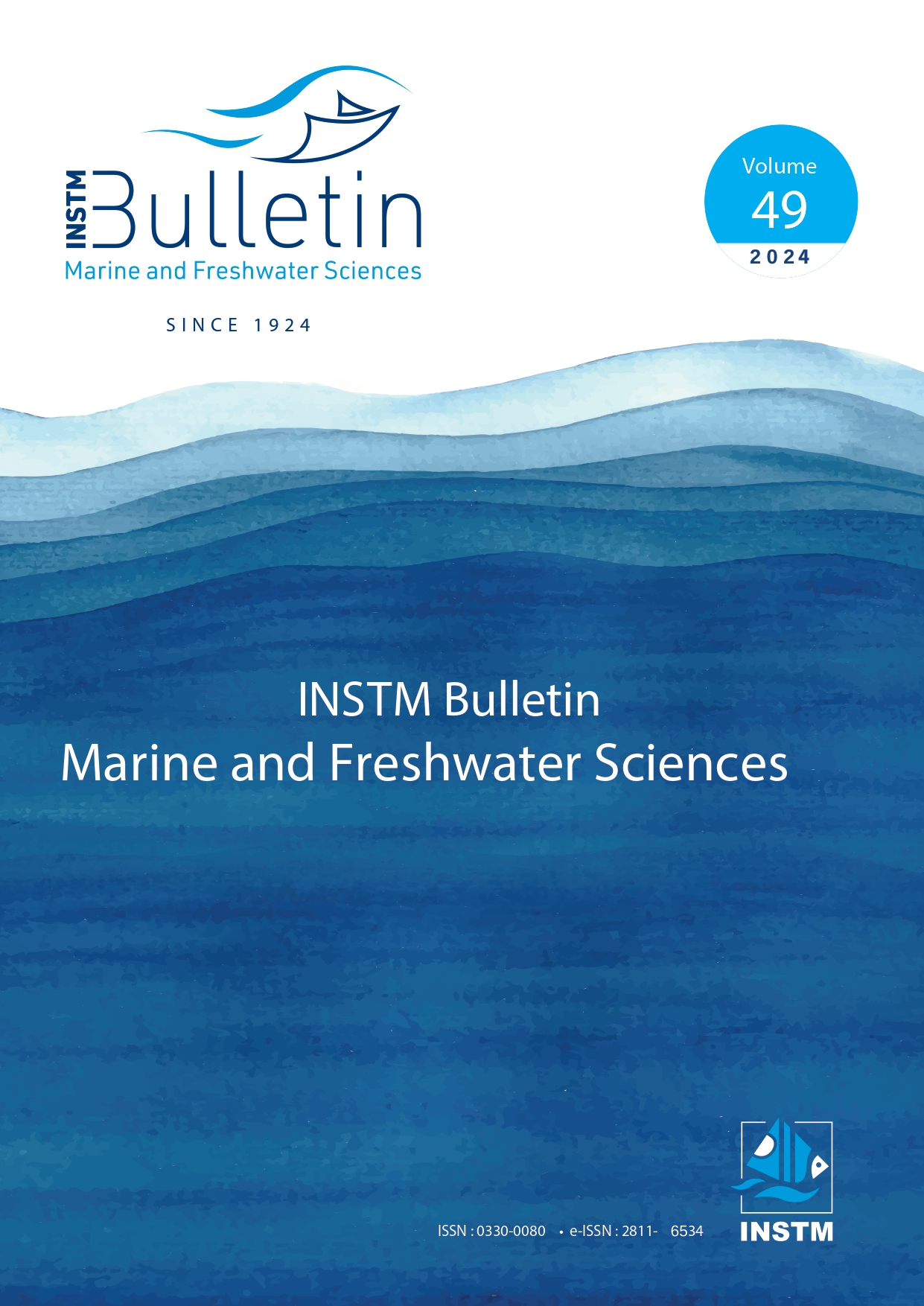Reproductive characteristics of common carp Cyprinus carpio carpio Linnaeus, 1758 after 21 years of its introduction
DOI:
https://doi.org/10.71754/instm.bulletin.v49.1700Keywords:
Introduced species, Freshwater fish, Cyprinus carpio carpio, Reproduction, Sidi Salem dam, TunisiaAbstract
The common carp, Cyprinus carpio carpio is economically and ecologically an important freshwater fish. However, the reproductive knowledge of this species in Tunisian freshwaters, is scarce. The reproductive aspect of common carp (C. carpio carpio L, 1758) in the greatest reservoir “Sidi Salem” in Tunisia was studied monthly between May 2011 and August 2013. A total sample of 588 specimens, composed of 208 males, 256 females and 124 undetermined, were collected for this study. The sex ratio between females and males did not differ significantly from 1:1. The size at first sexual maturity (L50) for males was 35.31 cm (TL) while the females reached L50 at 40.00 cm TL. Cyprinus carpio in this dam is characterized by a single fractional spawning, for both sexes. It begins, when water temperature reaches 20.2 °C and photoperiod at 10.29 hours. The HSI (hepato somatic index), the RI (repletion index) and K (condition factor) were calculated.
The examination of the sexual cycle of C. carpio carpio explains more about their reproductive biology. This holds significant implications for biodiversity conservation, fisheries management and aquaculture practices, and contributes to a more comprehensive understanding of ecological systems.
Downloads
Downloads
Published
How to Cite
Issue
Section
License
Copyright (c) 2024 Houda DJAIT, Ibtissem LOUIZ, Oum Kalthoum BEN HASSINE, Houcine LAOUAR, Lilia BAHRI-SFAR

This work is licensed under a Creative Commons Attribution 4.0 International License.












